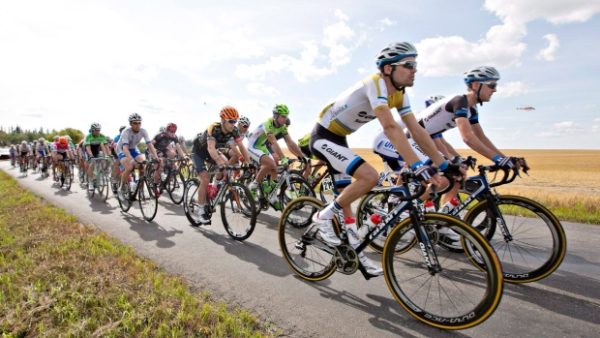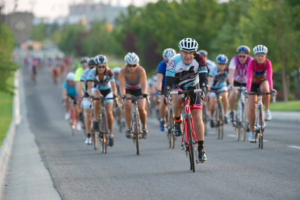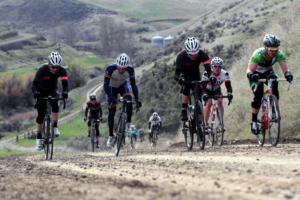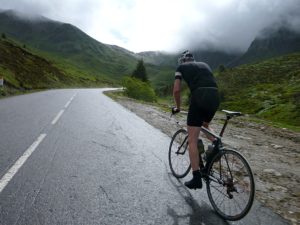Taking the first step towards your first road race is a huge deal. Not only are you taking your love of cycling one step beyond a hobby, but you’re also entering the world of elite teams, expensive gear, and race day nerves. But don’t let any of that intimidate you. There are a ton of races out there catering to every skill level and type of riding. Your first road race should be something you look forward to, a goal that pushes your training, but remains fun throughout the entire process. Here’s what you you need to know about choosing, then prepping for your first road race.

Step 1: Find the Right Race/Event
First things first, you’ll want to decide the type of race you’re going to do.
Road Races
Road races are what you probably think of when you picture a bike race: a mass start on public or private roads, everyone aiming for the fastest time possible. Depending on the race, riders may be sorted into categories ranging from five (new racers) to one (just below professional). They can also vary in distance from a few miles to over 200. If you are entering a category race, be sure to enter into a suitable category. If it’s your first race, that doesn’t necessarily mean you should enter the slowest category. Try going out on a few group rides and gauge where you’re at in comparison to riders who have raced before.
Sportive
Whereas road races are very competitive, sportive events give riders a chance to be timed in a race-like setting, but with much less intensity. They are typically a longer distance, and are all about making it across the finish line in the best time for you. You could include Gran Fondos and Century Rides in this category as a marathon for cyclists. The riders at the front compete for the win, the riders in the middle go for a personal record, and the riders in the back aim to beat the cut-off time.

Criteriums
A criterium race (or crits, for short) are short, fast races held on closed loop courses usually between 0.5 and 2 miles in length. Crits differ from standard road races in that there is no fixed race distance. Instead, you race for a predetermined length of time…in most cases. As they are often a shorter duration then regular road races, crits are pretty much all-out from start to finish.
Cyclocross
Cyclocross is a type of race that occurs in a circuit of about 2.5-3.5km and consists of off-camber tracks on grass and dirt, sand pits, tight corners, stairs, and barriers. The races take place in city parks and organizers line up tape and obstacles to create the courses.
Gravel Grinders
A gravel grinder is a race or ride that typically combines riding on a variety of surfaces including asphalt, gravel, dirt, and even some single track. As this niche has become increasingly popular over the last couple years, there are a ton of events to choose from. Distances vary from 50–150+ miles, and the routes themselves from hard packed dirt roads to rocky and rough terrain.
Step 2: Get the Right Gear
Unfortunately with cycling, a lot of it does come down to having the proper tools for the job. Unless you’re willing to invest in new gear, be sure to sign up for a race that you can do on your current setup. In addition to a bike, you’ll need a helmet, cycling shoes, a jersey and cycling shorts with a good chamois.
 Step 3: Start Training
Step 3: Start Training
Signing up for a race is a great way to get motivated to start riding more. The number one piece of training advice is to spend a whole lot of time on your bike. Although the top riders will likely be putting in upwards of 20 hours a week on their bike, the key is frequency. Get used to riding your bike almost every day, then start adding in some longer distances (start with one long ride a week). You can also start adding some tempo and interval work into your training to improve your ability to ride faster for longer.
Step 4: Keep it Fun
Once the race day finally arrives, no matter how prepared you are, nerves are a completely normal thing to experience. Check out this “Race Day List” for more on what to expect from the day of. Don’t forget, as nervous and anxious as you might feel before the race, you will also be a euphoric ball of joy after the finish line! Don’t worry too much about your results in your first few races, but focus more on the overall experience–including the training. So go ahead and sign up for that big event, trust that the nervous pit in your stomach is a good thing, and have a great time building lifelong memories on two wheels.